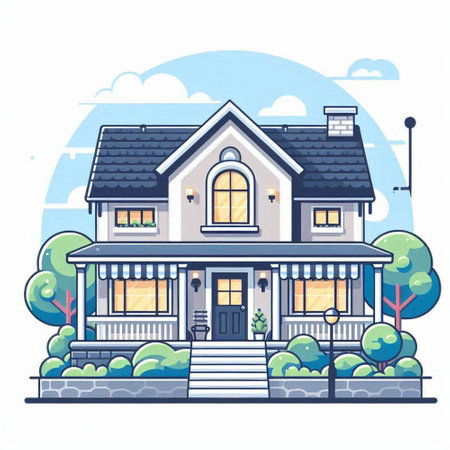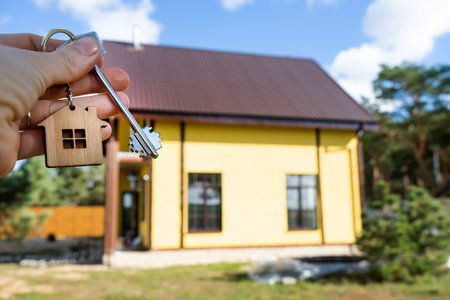1. Understanding the Basics of HVAC Systems
If youre thinking about replacing your HVAC system, its important to first understand what an HVAC system is and why it matters for your home. HVAC stands for Heating, Ventilation, and Air Conditioning. These systems work together to keep your home comfortable year-round—warm in the winter, cool in the summer, and well-ventilated all the time.
What Does an HVAC System Do?
An HVAC system controls indoor temperature, humidity levels, and air quality. It’s not just about heating or cooling—it’s about creating a comfortable and healthy living space no matter the season.
Main Components of an HVAC System
Here are the key parts that make up a typical residential HVAC system:
| Component | Description |
|---|---|
| Furnace | Heats air and distributes it through the home using ductwork. |
| Air Conditioner | Cools the air by removing heat and moisture from inside the home. |
| Heat Pump | A dual-purpose unit that both heats and cools; ideal for moderate climates. |
| Ductwork | A network of tubes that distribute heated or cooled air throughout the house. |
| Thermostat | The control center where you set your desired temperature. |
| Air Handler | Circulates air throughout the home and works with both ACs and heat pumps. |
| Ventilation System | Ensures fresh air circulation and helps maintain indoor air quality. |
Why Your HVAC System Matters
Your HVAC system plays a huge role in your homes overall energy efficiency. A well-functioning system can lower utility bills, reduce environmental impact, and improve comfort. On the flip side, an old or failing system might lead to inconsistent temperatures, poor air quality, and higher energy costs—making replacement not just a matter of comfort but also a smart investment in your homes long-term value.
Comfort + Efficiency = Smart Living
When considering replacement costs later on, knowing how each component functions helps you understand what youre paying for—and why its worth it.
2. Signs It’s Time to Replace Your HVAC System
If youre wondering whether its time to replace your HVAC system, youre not alone. Many homeowners face this decision, especially when repair costs start adding up or comfort levels drop. Here are some common signs that may indicate its time to consider a replacement.
1. Age of the System
The typical lifespan of an HVAC system ranges from 10 to 15 years. If your system is within or past this range, it may be operating less efficiently and could be nearing the end of its useful life.
Average Lifespan by System Type:
| System Type | Expected Lifespan |
|---|---|
| Central Air Conditioner | 10–15 years |
| Furnace (Gas) | 15–20 years |
| Heat Pump | 10–15 years |
| Ductless Mini-Split | 12–15 years |
2. Frequent Repairs and Breakdowns
If you find yourself calling the HVAC technician more often than usual, it may be more cost-effective in the long run to invest in a new system rather than continuing with frequent repairs. Replacing an aging system can save you money on service calls and parts over time.
3. Rising Energy Bills
An increase in your monthly energy bills—especially during the summer and winter months—could mean your HVAC system is no longer running efficiently. Older systems tend to lose efficiency and work harder to maintain your desired indoor temperature, resulting in higher utility costs.
4. Uneven Temperatures and Comfort Issues
Do you notice that some rooms are too hot while others are too cold? This inconsistency can be a sign that your HVAC system is struggling to distribute air evenly throughout your home, which may mean it’s time for an upgrade.
5. Strange Noises or Odors
Banging, rattling, grinding, or musty smells coming from your HVAC unit are warning signs of serious internal issues. While some problems might be fixable, others may indicate that the entire system is failing.
6. Poor Indoor Air Quality
Your HVAC system doesn’t just heat and cool—it also helps filter the air in your home. If you’re noticing more dust, humidity problems, or allergy symptoms, it could be due to an outdated or malfunctioning system.
Quick Tip:
If your HVAC system shows two or more of these signs, it might be time to start budgeting for a replacement. Newer models are much more energy-efficient and can help lower long-term operating costs.

3. Average Costs of HVAC Replacement
When it comes to replacing your HVAC system, one of the first questions most homeowners have is: “How much is this going to cost me?” While prices can vary depending on your location, the type of system you choose, and the size of your home, we can break down the average national costs to give you a solid starting point.
Factors That Affect HVAC Replacement Costs
Several key factors influence how much youll pay for a new HVAC system:
- System Type: Central AC with furnace, heat pump, or ductless mini-split.
- Home Size: Larger homes require more powerful (and often more expensive) systems.
- Efficiency Rating: Higher SEER (Seasonal Energy Efficiency Ratio) ratings usually mean higher upfront costs but better energy savings over time.
- Ductwork: Replacing or upgrading ducts can add significantly to overall costs.
Average National Cost Breakdown
The table below gives a general idea of what you might expect to pay for a full HVAC replacement, including both equipment and professional installation. These are estimated averages based on U.S. national data.
| Home Size (sq ft) | System Type | Total Estimated Cost |
|---|---|---|
| Up to 1,000 sq ft | Ductless Mini-Split | $3,500 – $7,500 |
| 1,000 – 2,000 sq ft | Central AC + Gas Furnace | $7,000 – $12,000 |
| 1,000 – 2,000 sq ft | Heat Pump System | $8,000 – $14,000 |
| 2,000 – 3,000 sq ft | Central AC + Gas Furnace | $9,000 – $15,000 |
| 2,000 – 3,000 sq ft | Heat Pump System | $10,000 – $17,000 |
A Closer Look at What’s Included
The total cost typically includes:
- The HVAC unit(s) – air conditioner and/or furnace or heat pump
- A new thermostat (if needed)
- Labor for removal of old system and installation of new one
- Bases and mounts for outdoor units
- Piping and refrigerant lines as needed for proper operation
Add-On Costs You Might Encounter
If your home needs additional work like duct replacement or electrical upgrades to handle the new unit’s power requirements, expect to pay extra. Here are some common add-ons:
- Ductwork replacement: $2,000 – $5,000+
- Zoning systems: $2,500 – $4,500+
- Thermostat upgrade (smart thermostats): $150 – $400+
If youre trying to budget for an HVAC replacement in your home, use these average ranges as a guide—but always get multiple quotes from licensed local contractors before making any decisions.
4. Factors That Influence HVAC Replacement Costs
When it comes to replacing your HVAC system, several key factors can affect how much youll end up paying. Understanding these variables can help you plan your budget more effectively and make smart decisions for your home.
System Type
The type of HVAC system you choose plays a big role in the total cost. Central air conditioning systems are typically less expensive than heat pumps, but each has its own benefits depending on your climate and energy needs.
| System Type | Average Cost (Including Installation) |
|---|---|
| Central Air Conditioner | $3,500 – $7,500 |
| Heat Pump | $4,000 – $8,500 |
| Ductless Mini-Split | $2,000 – $10,000 (varies by zones) |
Energy Efficiency Ratings (SEER & HSPF)
Higher efficiency systems may cost more upfront but can save you money on monthly energy bills. Look for SEER (Seasonal Energy Efficiency Ratio) ratings for cooling and HSPF (Heating Seasonal Performance Factor) for heating. The higher the rating, the better the efficiency.
Example:
- 14 SEER unit: Lower upfront cost, less efficient
- 18+ SEER unit: Higher initial investment, better long-term savings
Ductwork Upgrades or Repairs
If your existing ductwork is old or leaky, it may need to be replaced or sealed during your HVAC installation. This can add anywhere from $1,000 to $5,000 to the total cost depending on the size of your home and complexity of the layout.
Location and Climate
Your geographic location can impact both labor costs and the type of HVAC system that’s best for your area. For example:
- Hot climates: May require higher-capacity AC units
- Cold regions: Might benefit more from a dual-fuel system or high-efficiency furnace
- Urban areas: Labor rates may be higher than in rural locations
Brand and Quality of Equipment
The brand you choose can also influence price due to differences in quality, warranties, and features. Some premium brands offer quieter operation, advanced technology, and longer warranties—often at a higher cost.
| Brand Tier | Example Brands | Estimated Cost Range (Installed) |
|---|---|---|
| Economy | Goodman, Payne | $3,000 – $5,000 |
| Mid-Range | Lennox, Rheem | $5,000 – $8,000 |
| Premium | Trane, Carrier | $7,000 – $12,000+ |
Additional Features or Smart Technology
If youre considering extras like smart thermostats, zoning systems, or air purifiers integrated into your new HVAC setup, expect those to add to the overall price tag as well.
All these factors combined help determine the final cost of replacing an HVAC system. Being aware of them allows homeowners to make informed choices that balance comfort, efficiency, and budget.
5. Cost-Saving Tips and Financing Options
Replacing an HVAC system is a big investment, but there are smart ways to save money without cutting corners. Whether youre trying to lower upfront costs or spread payments over time, here are some practical strategies that American homeowners can use to make HVAC replacement more affordable.
Take Advantage of Seasonal Discounts
HVAC companies often offer discounts during the off-season—typically in spring or fall—when demand for heating and cooling services is lower. Scheduling your replacement during these periods can help you get better prices on both equipment and installation.
Look for Energy Rebates and Tax Credits
Many federal, state, and local programs offer financial incentives for upgrading to energy-efficient systems. These rebates not only reduce your initial costs but also promote long-term energy savings.
Common Rebate and Credit Programs
| Program | Description | Potential Savings |
|---|---|---|
| ENERGY STAR® Rebates | Offered through utility companies for qualifying high-efficiency systems | $100–$1,000+ |
| Federal Tax Credit | Available for certain ENERGY STAR certified HVAC systems under the Inflation Reduction Act | Up to 30% of cost (max $600–$2,000 depending on system) |
| State/Local Incentives | Varies by region; check with your local government or utility provider | Varies widely |
Explore Financing Options
If paying for a new HVAC system upfront isnt feasible, financing options can help you spread out the cost over time. Many HVAC contractors offer in-house financing or work with third-party lenders to provide flexible payment plans.
Popular Financing Choices
- HVAC Company Financing: Often includes promotional rates like 0% interest for a limited period.
- Home Equity Loans or HELOCs: Good option if you have significant equity in your home.
- Credit Cards with Introductory APRs: Some cards offer 0% APR for up to 18 months, ideal for short-term borrowing.
Bundle Services When Possible
If youre planning additional home upgrades—like insulation or ductwork repairs—consider bundling them with your HVAC replacement. Contractors may offer package deals that reduce overall labor and material costs.
Choose Energy-Efficient Models
Though high-efficiency systems may cost more upfront, they typically lower your monthly energy bills and qualify for more rebates and tax credits. Over time, these systems often pay for themselves in savings.
By combining strategic timing, available incentives, and smart financing choices, homeowners can significantly reduce the financial burden of replacing an HVAC system while enjoying improved comfort and efficiency at home.

